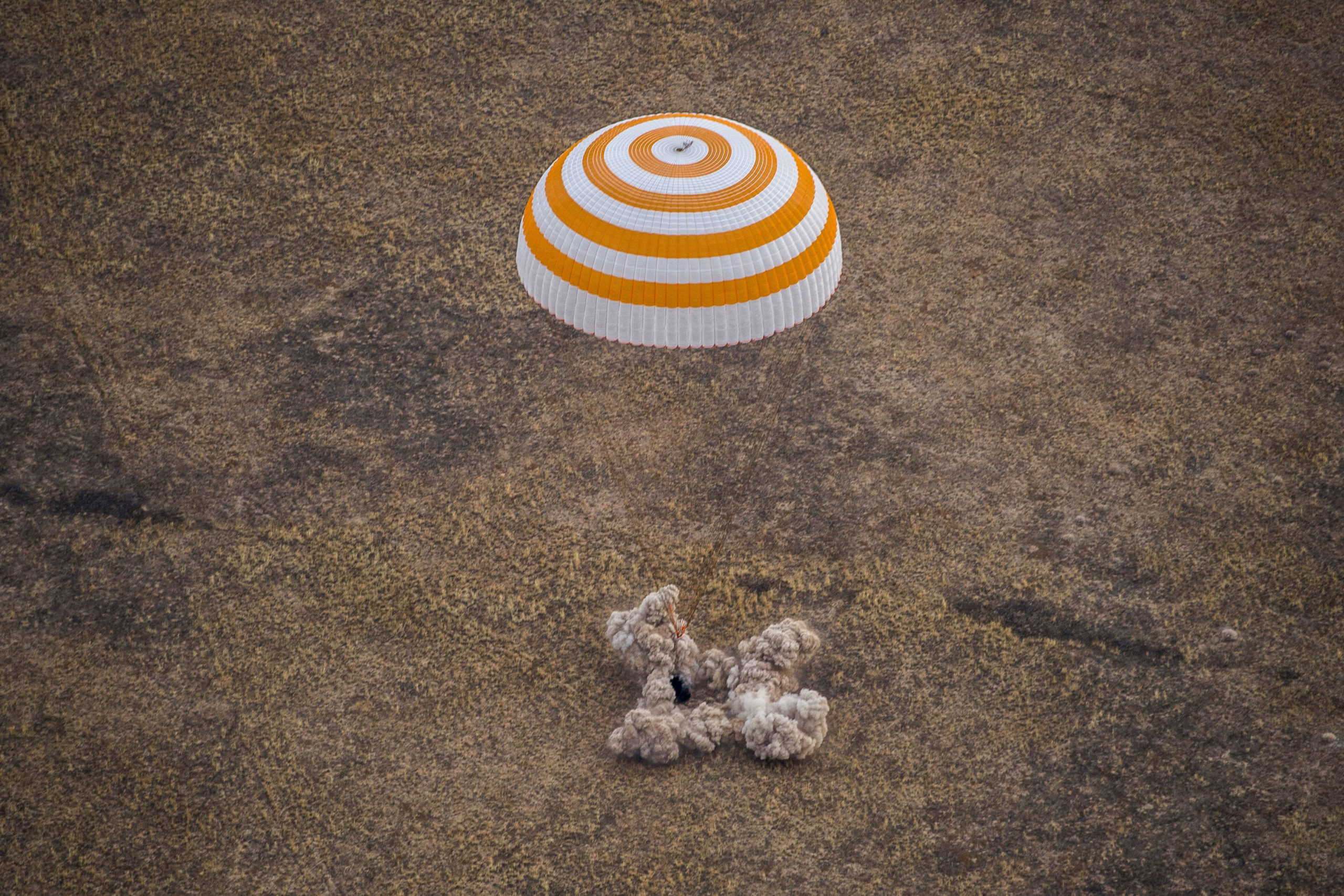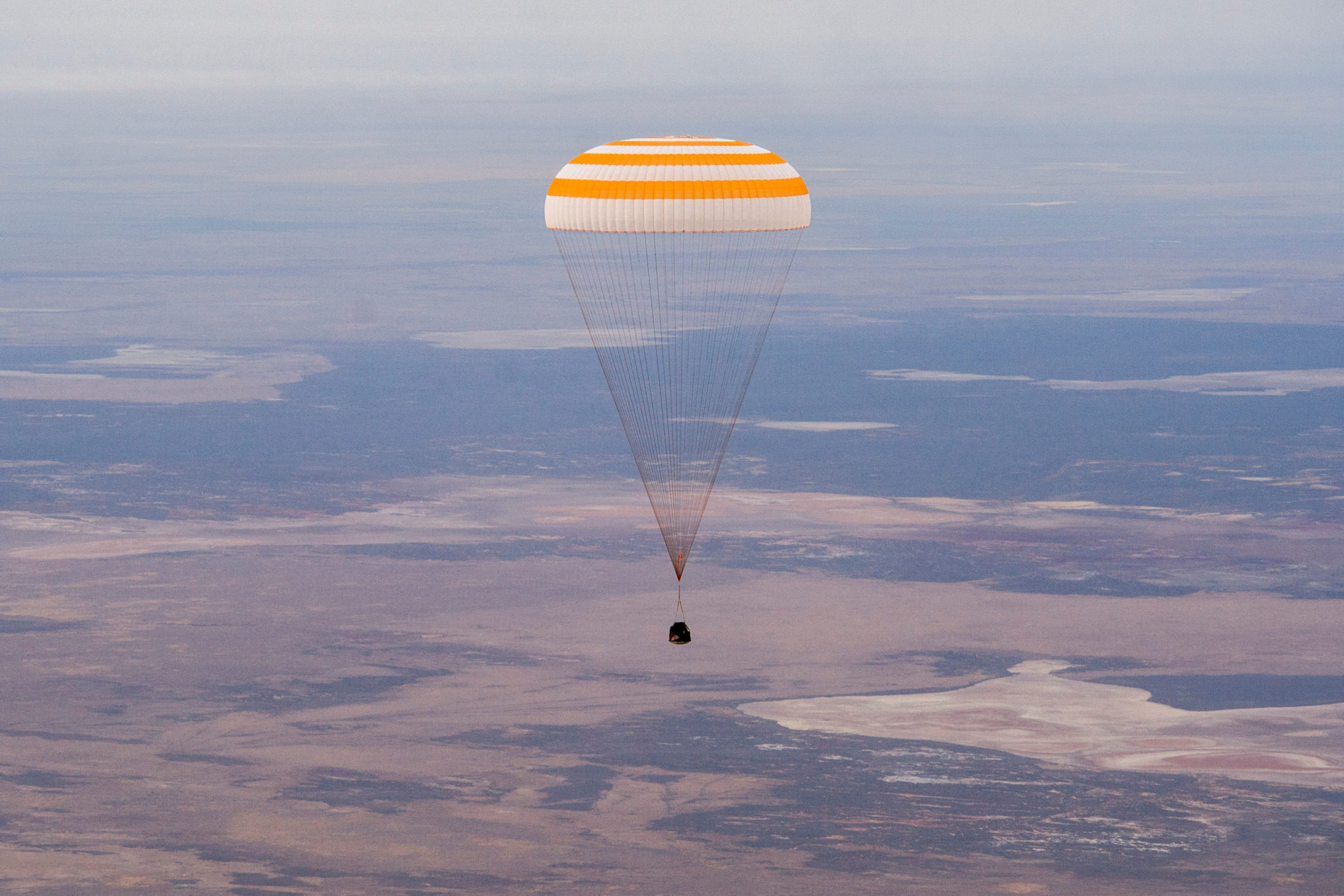
For SpaceUpClose.com & RocketSTEM
CAPE CANAVERAL, FL – A Soyuz trio including veteran NASA astronaut Chris Cassidy returned safely to Earth after living and working in Earth’s orbit for 196 days aboard the International Space Station (ISS) making a soft touchdown in Kazakhstan late Wednesday.
The Russian American trio of spaceflyers comprising Expedition 63 cosmonauts Ivan Vagner and Anatoly Ivanishin of the Russian space agency Roscosmos and NASA’s Cassidy boarded their Soyuz MS-16 spacecraft after a farewell ceremony with the recently arrived trio of Expedition 64, closed the hatches and departed the ISS at 7:32 p.m. EDT Wednesday Oct. 21, and landed just south of the town of Dzhezkazgan, Kazakhstan, three and a half hours later at 10:54 p.m. EDT (8:54 a.m. Kazakhstan time).
“Touchdown!!! The Exp 63 crew, with @Astro_SEAL, @ivan_mks63 and Anatoly Ivanishin, has returned to Earth landing safely in Kazakhstan at 10:54pm ET,” NASA tweeted.
Touchdown!!! The Exp 63 crew, with @Astro_SEAL, @ivan_mks63 and Anatoly Ivanishin, has returned to Earth landing safely in Kazakhstan at 10:54pm ET. https://t.co/6xxCacI1Fd pic.twitter.com/VCQEIdzwHe
— International Space Station (@Space_Station) October 22, 2020
They underwent preliminary medical checks at the landing site by the Russian recovery forces and then split up to return home.
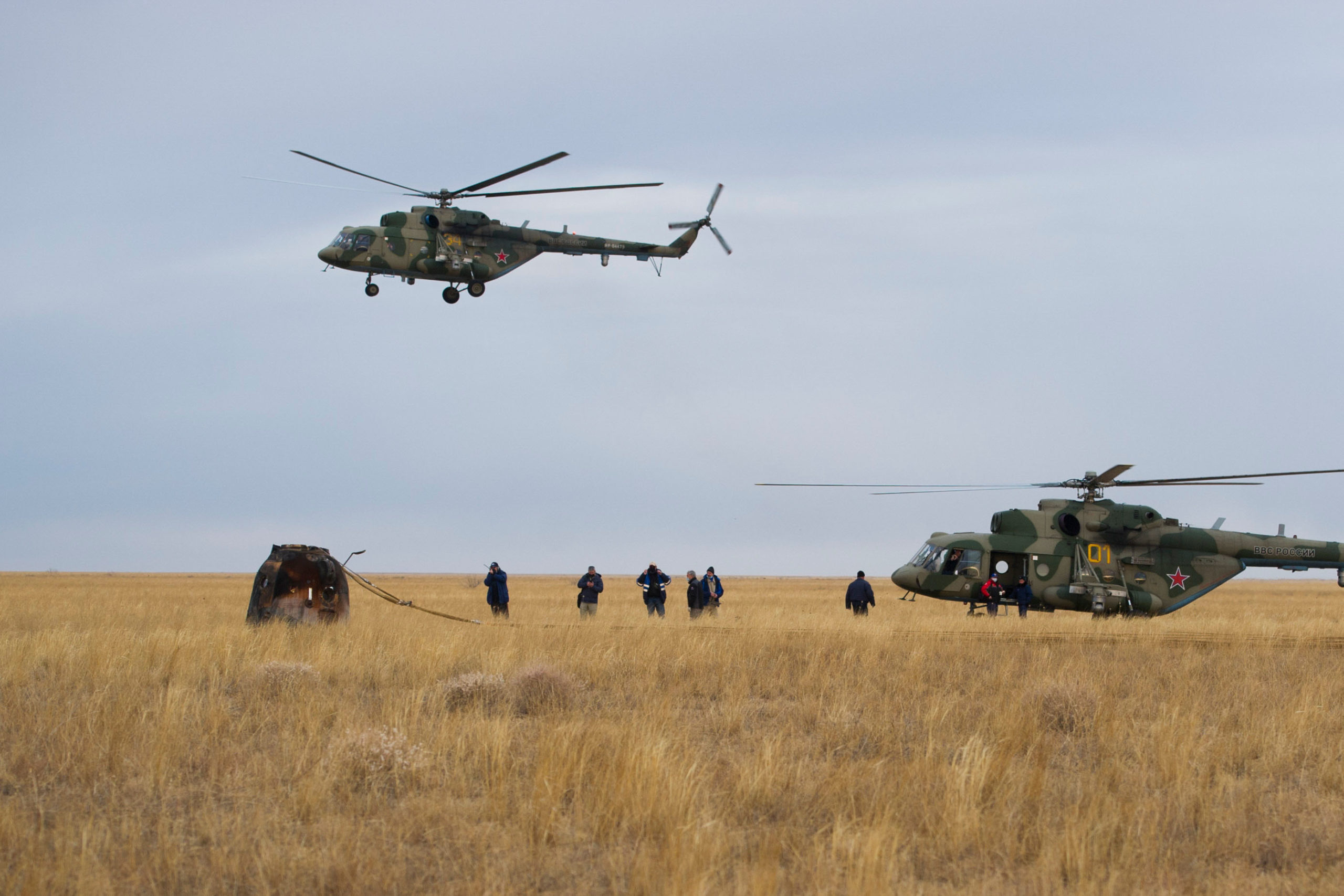
“Exp 63 crewmates @Astro_SEAL, Anatoly Ivanishin and @Ivan_MKS63 are back on Earth after 196 days conducting research on the station,” NASA tweeted.
Exp 63 crewmates @Astro_SEAL, Anatoly Ivanishin and @Ivan_MKS63 are back on Earth after 196 days conducting research on the station. https://t.co/rYrBdMYdij pic.twitter.com/p9EKUjDfVV
— International Space Station (@Space_Station) October 22, 2020
Three time NASA astronaut Cassidy boarded a NASA plane back to Houston, while Vagner and Ivanishin will flew home to Star City, Russia.
When Cassidy, Ivanishin, and Vagner departed the space station Expedition 64 officially began on station, with Roscosmos cosmonaut Sergey Ryzhikov serving as station commander and NASA’s Kate Rubins and Roscosmos’ Sergey Kud-Sverchkov serving as flight engineers.
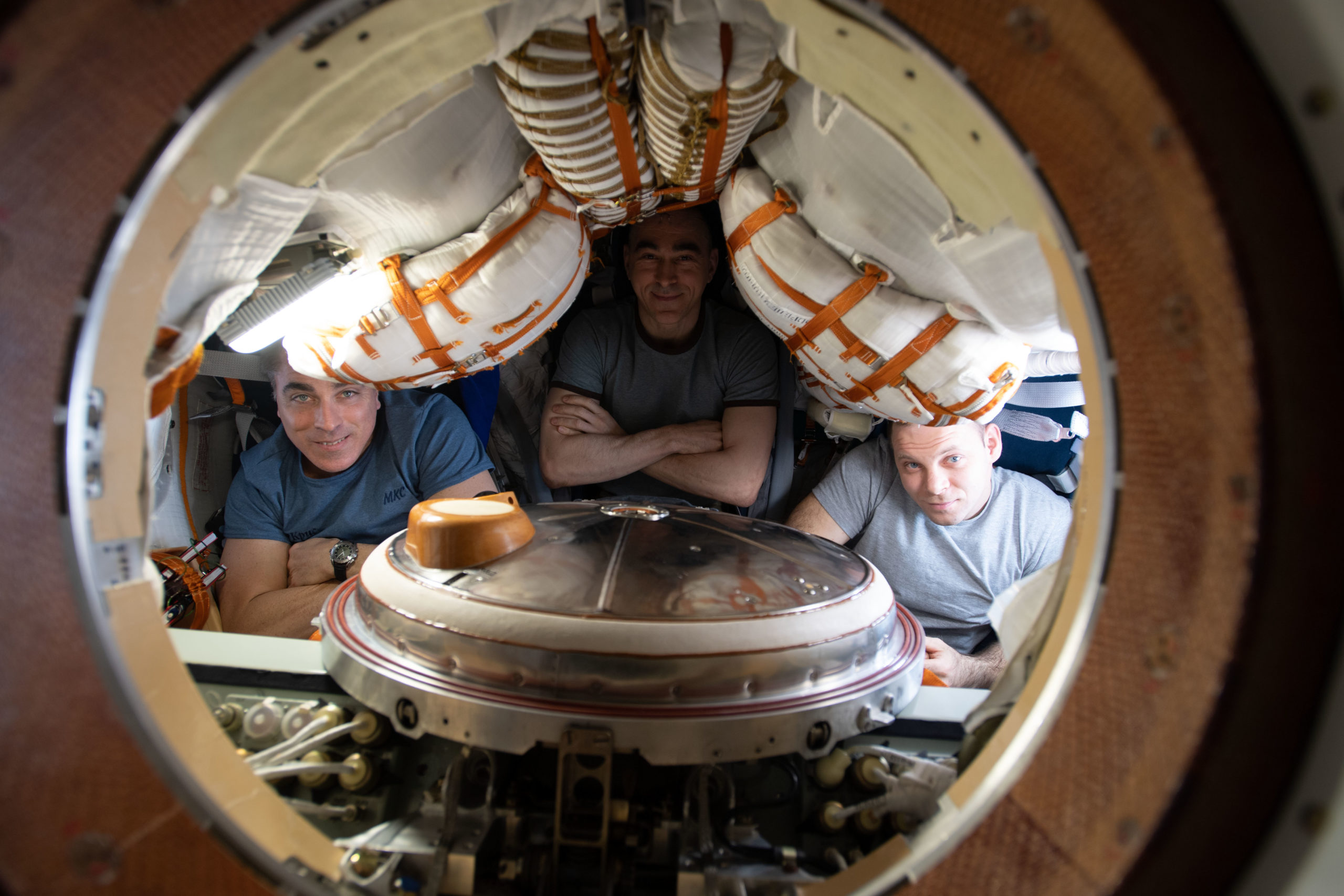
Expeditions 63 and 64 spent a joint stay together for 1 week.
Rubins’ made history during her first spaceflight in 2016 when she became the first person to sequence DNA in space.
Ryzhikov becomes ISS commander now with the start of Expedition 64 with a reduced crew of three for a few weeks.
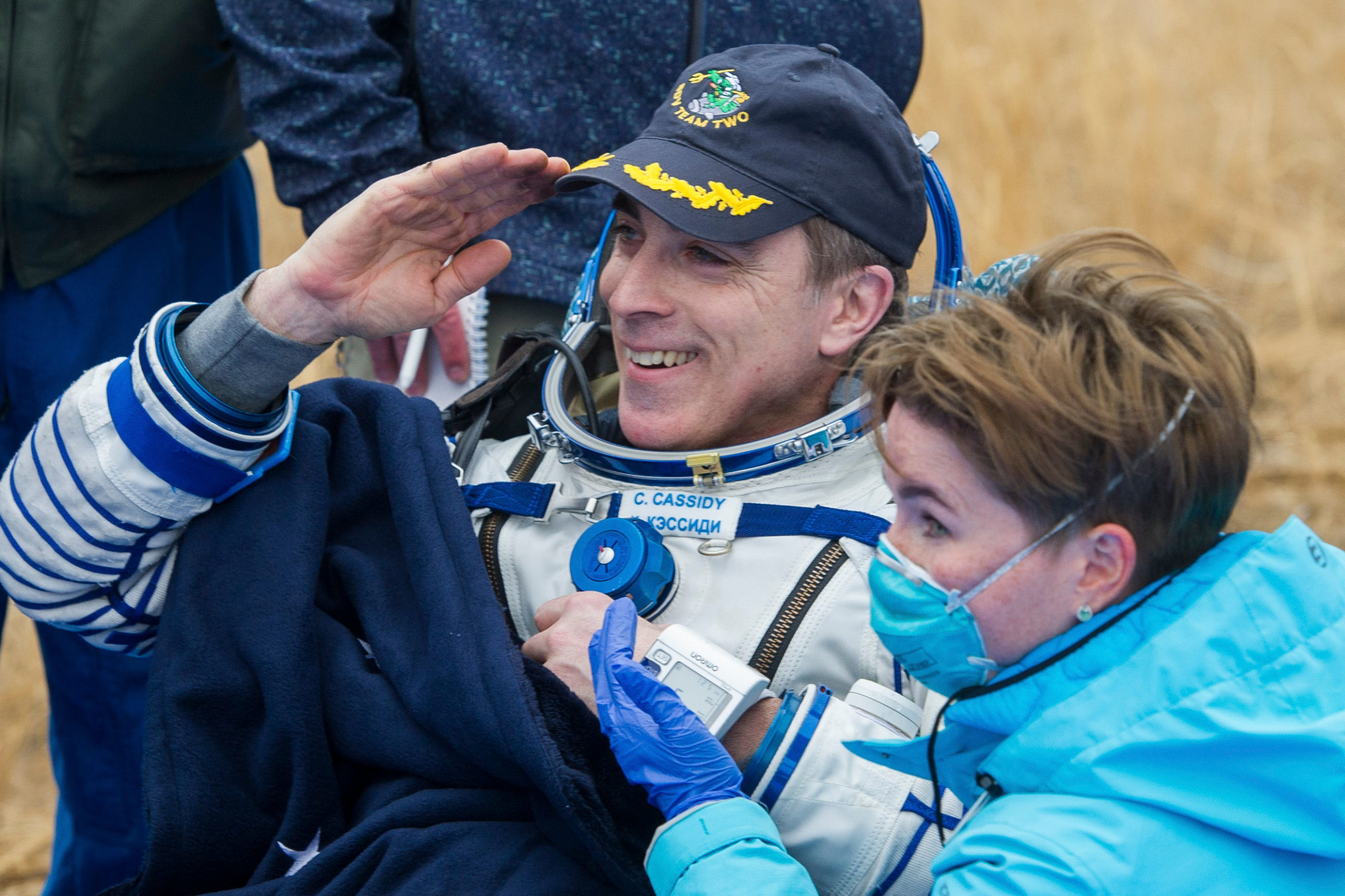
The resident station crew will rise again to a first time crew enlarged of seven sometime as soon as mid-November following the launch of the NASA contracted SpaceX Crew-1 Crew Dragon mission on a Falcon 9 rocket carrying an international crew of four to the ISS from the Kennedy Space Center.
Further details from NASA:
During this latest mission, Cassidy served as commander of Expedition 63 and welcomed SpaceX Demo-2 crew members Robert Behnken and Douglas Hurley of NASA – the first astronauts to launch to the space station on an American spacecraft from American soil since the retirement of the space shuttle in 2011.
Cassidy and Behnken completed four spacewalks, totaling 23 hours and 37 minutes, to upgrade station batteries. The final spacewalk was the 10th for both astronauts, making them two of only four only U.S. astronauts to complete 10 spacewalks. Cassidy now has spent a total of 378 days in space, the fifth highest among U.S. astronauts.
While on station, he contributed to hundreds of experiments, including a study of the influence of gravity on electrolytic gas evolution, which looks at bubbles created using electrolysis. Gravity is a key factor in creating buoyancy for bubbles, so microgravity makes it possible to single out bubble growth and study its effect in processes. Using this method to better understand how bubbles grow could improve devices like medicine delivery through small, bandage-like skin patches.
Cassidy also worked with Astrobee, cube-shaped, free-flying robots that may one day assist astronauts with routine duties, and conducted research for the Onco-Selectors experiment, which leverages microgravity to identify targeted cancer therapies.
When Cassidy, Ivanishin, and Vagner departed the space station, Expedition 64 officially began on station, with Roscosmos cosmonaut Sergey Ryzhikov serving as station commander and NASA’s Kate Rubins and Roscosmos’ Sergey Kud-Sverchkov serving as flight engineers.
In November, the Expedition 64 crew is scheduled to welcome NASA’s SpaceX Crew-1 – NASA astronauts Michael Hopkins, Victor Glover, and Shannon Walker, and Japanese Aerospace Exploration Agency astronaut Soichi Noguchi. Crew-1 will be the first long-duration mission to fly as part of NASA’s Commercial Crew Program and mark the return of America’s capability to regularly launch astronauts from U.S. soil.
……
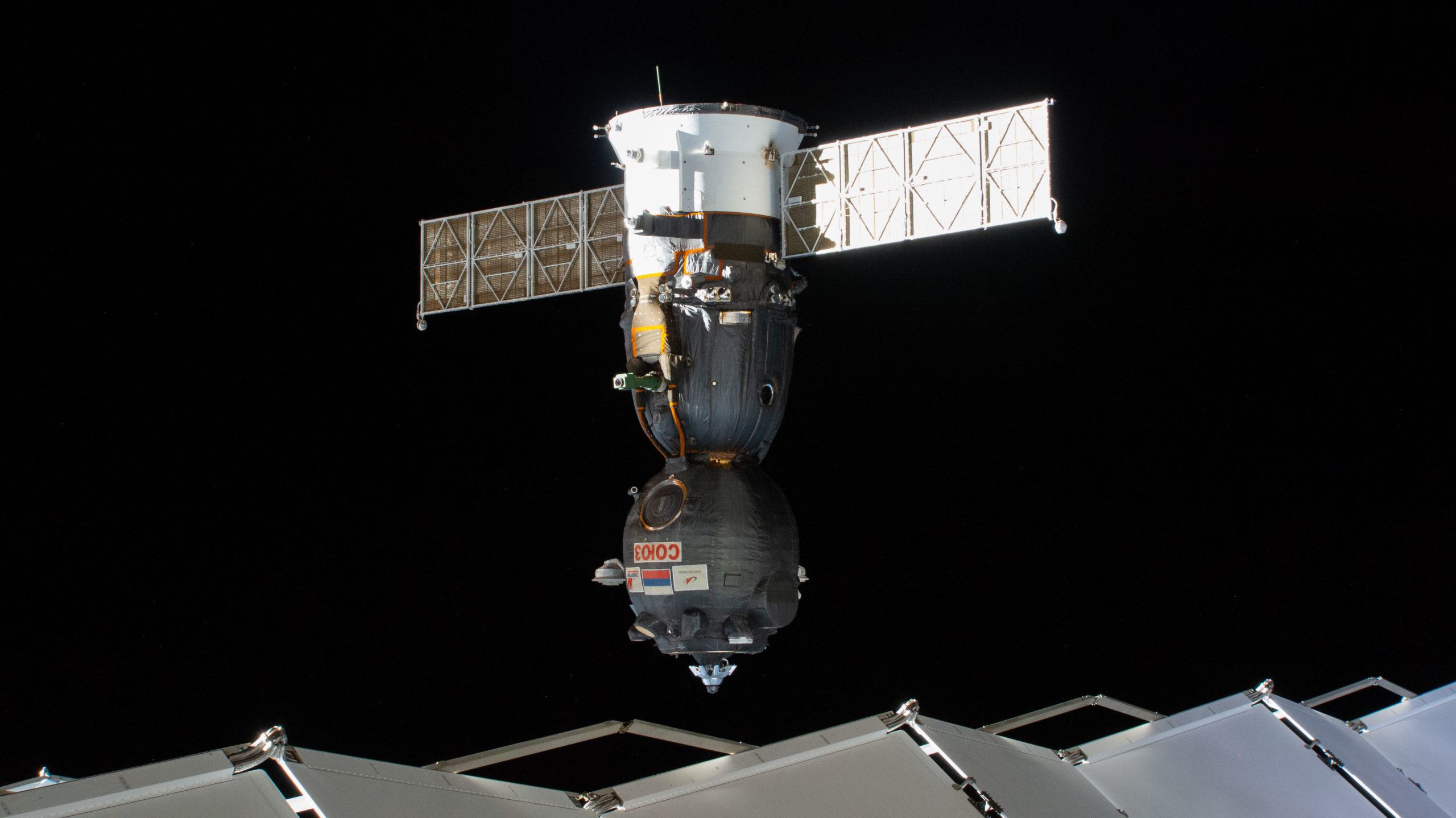
Watch my commentary about upcoming SpaceX Crew-1 mission in November and NASA Space Launch System updates at WESH 2 NBC News and WFTV Ch 9 ABC News Orlando on Oct 13/14:
https://www.wesh.com/article/delayed-astronaut-launch-means-for-space-coast/34363108
Watch Ken’s continuing reports about ISS, Starlink, Commercial Crew and Artemis and onsite for live reporting of upcoming and recent SpaceX and ULA launches including Demo-2, Starlink, X-37B, Solar Orbiter, Mars 2020 and more at the Kennedy Space Center and Cape Canaveral Space Force Station.
Stay tuned here for Ken’s continuing Earth and Planetary science and human spaceflight news: www.kenkremer.com –www.spaceupclose.com – twitter @ken_kremer – email: ken at kenkremer.com
Dr. Kremer is a research scientist and journalist based in the KSC area, active in outreach and interviewed regularly on TV and radio about space topics.
………….
Ken’s photos are for sale and he is available for lectures and outreach events
Please consider supporting Ken’s work by donating at Patreon:
https://www.patreon.com/kenkremer
